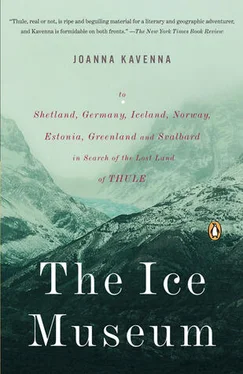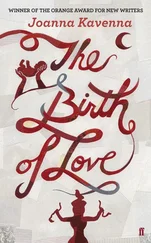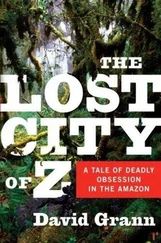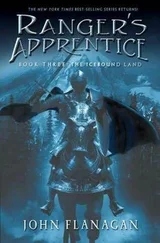One of the main Nazi buildings was the Führer Building, where the 1938 Munich Agreement was signed, a failed attempt by a nervous prime minister to avert war. And against the backdrop of Ludwig’s classical square, Hitler ordered ‘temples’ to be built, to honour the Nazi cult. There were two ‘temples’ for mystical ceremonies, the dramas of smoke and lights favoured by the Nazis. With these ‘temples’ Hitler made Königsplatz a centre of the pseudo-religion of Nazism.
They are now ruins, these ‘temples.’ In the early morning, I was standing in Königsplatz, looking at the fine white columns of Ludwig’s buildings, with alcoves housing statues and pediments covered with bas-relief figures. With the Nazi buildings behind me, out of view, the square was harmonious. Ludwig’s neo-classicism rose on three sides of the square, most of it created by a single architect, Leo von Klenze. Flags fluttered in the breeze; cars moved across the cobblestones. The morning was quiet and warm; the sun was beginning to break through the clouds. Yet when I turned, there were the plinths of the ‘temples,’ walls about six feet high, with trees growing on the top. The Americans ordered the destruction of the ‘temples’ at the end of the war, leaving only these remnants. They left the monumental ugliness of the Führer Building, which had survived the Allied bombing raids almost intact. Needing space in a devastated city the American troops used the building as a head-quarters. Next to the ‘temples’ there was a board, offering a brief history of the square. It had been put up in 2001. ‘Until now,’ the writing on the board said, ‘there has been no permanent reference on the site to the history of the square and its surroundings, a place where thousands took part in mass rallies to pay their respects to the cult of a death-dealing regime of terror which had no respect for human life. For a long time there was no reference on buildings which had been the architectural expression of the “capital of the movement.”’ The board ended with a message to all who stood there, surveying the buildings: ‘Exhortation and commemoration of the Nazi terror must also bear reference to the sites of the perpetrators. This is the only way to ensure that the sufferings of the victims remain permanently in the public awareness.’
By the placard, I could hear a guide talking to her tour group. ‘This is Königsplatz,’ she was saying. The hybrid creation of former kings and later Nazis. The opulent columns of the early kingly buildings and the gloating ugliness of the Nazi bricks, everything jarring, the Nazi buildings straining for effect, designed for corruption. ‘Please don’t crowd too much around the information poster. Everyone can get a look,’ added the guide.
The tour group stared round at the square. ‘In this building,’ said the guide as the tour group cast a collective eye on the blank lump of stone, close to where I was standing, ‘in this building,’ said the guide again, ‘the British prime minister of the time, Neville Chamberlain, signed an agreement with Hitler in 1938, the appeasement pact.’ And everyone nodded slowly, staring at the bricks. Now there was a music college in the Nazi complex; it was incongruous, but from inside came the notes of a sonata, played on a piano, nearly drowned out by the roar of traffic.
‘Later,’ said the guide, ‘we will walk to the Feldherrnhalle, around the corner, which was where Hitler marched in 1923, when he tried to take over Munich by force.’
It was an anti-tour, an unfortunate turn for a city tourist board to have to take. Here, the guide would say, Hitler plotted the appalling events which would embroil the country in destruction; here some political opponents were brutally killed; here a former Nazi loyalist, Ernst Röhm, was condemned to death. Here the Nazis made the complex and delicate into something monolithic and savage. There were memorials throughout Munich, and an army of these guides leading people round the streets on tours of Nazi architecture and significant Nazi sites. On the sides of Ludwig’s vast art gallery, the Pinakothek, next to Königsplatz, the post-war repairs were starkly visible. The bomb damage had been filled in with plain red bricks, which stood out against Klenze’s ornate pale stone. Windows had been bricked up, as if the building were awaiting more intricate repairs. It made for a mottled façade, showing how severely the Pinakothek had been bombed. The centre of the building had been devastated, and rebuilt in this chastened style, redolent of a large factory.
I walked into the Pinakothek, and found the galleries almost empty. I meandered through the cold rooms, relieved to be out of the sun. In the Rubens room, there was an art student quietly copying The Rape of the Daughters of Leucippus , painting the pink curves of the women and Castor and Pollux on their black and white horses. The student was standing in ripped jeans, his shirt picturesquely covered in paint, dabbing his brush on his canvas. Walking past the student I found Rubens’s portrait of The Death of Seneca , a dramatic canvas showing the philosopher preparing to die. Seneca had been accused of participating in a conspiracy and was forced by his former pupil Nero to commit suicide. Tacitus wrote that he severed his arteries and stepped into a basin of hot water. When this failed to kill him, he had himself carried to a steam bath, where he suffocated. In Rubens’s painting, Seneca—a perfect muscular classical hero—is being helped by a doctor, who seems to have cut an artery in his left arm. Seneca is the quintessential Stoic, dignified and resigned, while on his other side, a scribe is writing down his last words. “VIR” appears on the page, suggesting VIRTUS. Seneca lifts his head, trying to ignore the pain of death, talking to the last about courage and worth.
It made me recall the Chorus of Seneca’s play, with their ambiguous talk about Thule. It was affecting to stand by this portrait in the museum bombed in the war, surrounded by the stark bricks of Nazi buildings. This mottled museum, pieced back together again, with this portrait of Seneca preserved through wars. There was something continuous about Seneca writing about Thule, Rubens painting Seneca, and Ludwig I building his neo-classical buildings and collecting ancient statues in the nineteenth century. They were part of the same tradition, a Western classical tradition. Then there were the Nazis crafting their brutal pillars, thinking they continued the line of influence and creation. They had tried to manufacture their own mysticism, a deathly religion. They had built amphitheatres in forests, enjoying a rustic setting for their sites. And outside stood Königsplatz, where the trees were now growing on the plinths of the Nazi ‘temples.’
The Thule Society had been a part of the climate that engendered Hitler, rather than a dynamic force in his rise. By spring 1918, Sebottendorff claimed the Thule Society had 200 members, and by autumn there were 1,500 members in Bavaria, with 250 in Munich, he claimed. During 1918 the Thule Society began meeting in rooms at the Four Seasons Hotel, which still stands in central Munich, on an imperial boulevard called Maximilianstrasse.
The hotel has a fine façade, with flags fluttering from poles, and tall hooded windows. The hotel lobby is bright orange, the effect of a glass roof stained in bright colours. The walls are wood-panelled; the stairs are marble. There is a large silver tea urn and a collection of armchairs placed around antique tables. The gold trimmings glint in the brightness. When I arrive, the lobby is full of tourists taking tea: a blonde woman in designer sunglasses and the easy casual clothes of the truly rich; a group of Japanese people waiting at reception, with suitcases lined up behind them. There are bright orange flowers on the reception desk, and on the wall hangs a tapestry showing a hunting scene. It makes for a glowing lobby at the Four Seasons Hotel, though the bar in the next room is dark, with heavy tables, creaking old doors and a few waiters wiping glasses.
Читать дальше












